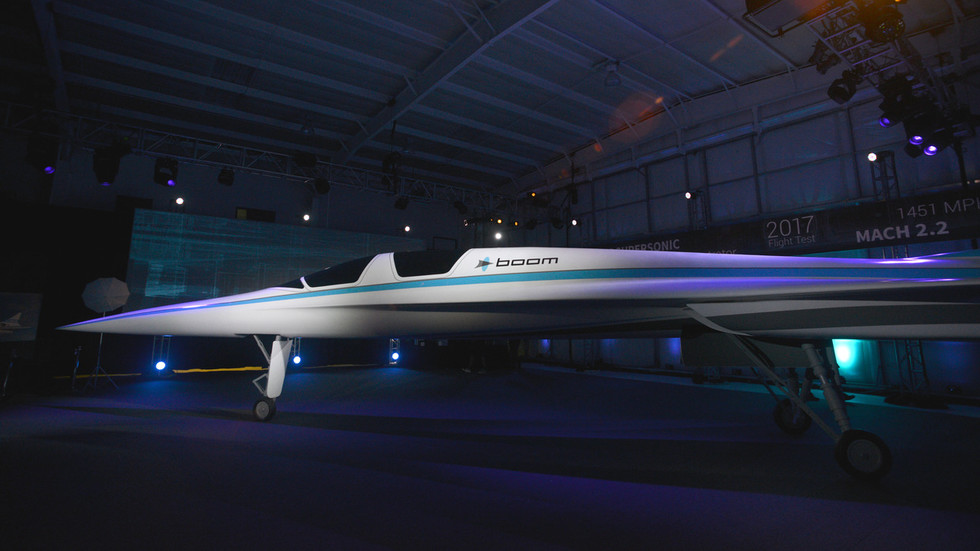Breaking the Sound Barrier: A Historic Leap in Aviation Technology
In a remarkable feat that has captivated the aviation industry and enthusiasts alike, a prototype jet has successfully breached the sound barrier, marking a significant milestone in aviation history. This historic leap not only underscores advancements in aerospace engineering but also lays the groundwork for the future of supersonic travel. With the ability to travel faster than the speed of sound, this achievement could revolutionize air travel, making long-distance journeys shorter and more efficient.
The Significance of Breaking the Sound Barrier
Breaking the sound barrier is not just a technical achievement; it represents a paradigm shift in aviation technology. The event recalls the legendary flight of Chuck Yeager in 1947, who first broke the sound barrier in the Bell X-1. Since then, the industry has been on a quest to develop aircraft that can do so safely and efficiently.
The recent accomplishment comes at a time when advancements in materials science, aerodynamics, and propulsion technology have converged to make supersonic flight more viable. The implications of this achievement are vast:
- Reduced Travel Times: Flights that typically take hours could be reduced to mere minutes, allowing business travelers to save time and enhancing the overall travel experience.
- Economic Impact: The introduction of supersonic jets could stimulate economic growth by connecting cities more efficiently, promoting trade and tourism.
- Technological Innovation: The research and development surrounding supersonic flight can lead to innovations that benefit commercial aviation and other sectors.
Technological Innovations Behind the Success
The successful flight of the prototype jet that broke the sound barrier is a testament to the relentless pursuit of innovation in aviation technology. Several key factors contributed to this achievement:
1. Advanced Aerodynamics
Aerodynamics play a critical role in a jet’s ability to break the sound barrier. Engineers have worked tirelessly to refine aircraft shapes to minimize drag and optimize performance. Modern supersonic designs often incorporate features such as:
- Delta Wings: These triangular wings provide improved stability at high speeds.
- Variable Geometry: Some designs allow for adjustable wing shapes to enhance aerodynamic efficiency during different phases of flight.
2. State-of-the-Art Materials
The materials used in the construction of supersonic jets have advanced significantly. Lightweight, heat-resistant materials allow aircraft to withstand the extreme conditions encountered during supersonic flight. Innovations such as:
- Carbon Fiber Composites: These materials provide strength and durability while minimizing weight.
- Heat-Resistant Alloys: Special alloys can endure the intense heat generated by air friction at supersonic speeds.
3. Next-Generation Engines
Engine technology has also evolved, with new engines designed to produce greater thrust while maintaining fuel efficiency. These engines often feature:
- Supercruise Capability: This allows aircraft to maintain supersonic speeds without afterburners, which consume excessive fuel.
- Noise Reduction Technologies: Advances in engine design aim to minimize the sonic boom effect, making supersonic travel more acceptable for communities below flight paths.
The Future of Supersonic Travel
The recent breakthrough in breaking the sound barrier marks just the beginning of a new era in aviation. As manufacturers and engineers build on this success, several trends are likely to emerge:
1. Commercial Supersonic Flights
With the renewed interest in supersonic travel, commercial airlines are exploring the feasibility of adding supersonic jets to their fleets. This could lead to:
- New Routes: Airlines may launch flights on previously unserved routes, connecting more destinations.
- Luxury Travel: Supersonic jets could cater to high-end passengers, offering exclusive travel experiences.
2. Environmental Considerations
As the aviation industry faces increasing scrutiny over its environmental impact, the development of supersonic jets must also consider sustainability. Innovations aimed at reducing carbon emissions and noise pollution will be critical, including:
- Alternative Fuels: The use of sustainable aviation fuels (SAFs) could help mitigate the carbon footprint of supersonic flights.
- Noise Mitigation Strategies: Technologies that reduce sonic booms will be essential in gaining acceptance from communities affected by supersonic travel.
3. Technological Collaborations
The complexity of developing supersonic aircraft is driving collaborations between aerospace companies, governments, and research institutions. These partnerships can accelerate innovations and lead to:
- Shared Knowledge: Collaborative efforts can harness diverse expertise to tackle challenges in supersonic flight.
- Increased Funding: Joint ventures may attract investment from government grants and private sectors, fueling further development.
Conclusion: A Bright Future Ahead
Breaking the sound barrier is a historic leap in aviation technology that has opened doors to a future filled with possibilities. As engineers and innovators build on this success, the dream of efficient, fast, and environmentally responsible air travel is becoming a reality. The aviation landscape is poised for transformation, and as we look to the skies, the prospect of supersonic travel becomes increasingly tangible.
In summary, the recent flight that successfully broke the sound barrier is not merely an engineering triumph; it is a beacon of what lies ahead in aviation technology. With concerted efforts in innovation, sustainability, and collaboration, the future of supersonic travel promises to be exciting and transformative.
See more Future Tech Daily

